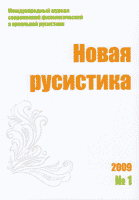Символика Петербурга/Ленинграда в поэзии Анны Ахматовой
Symbolism of Sankt-Peterburg/Leningrad in A. Akhmatova’s Poetry
Author(s): Soňa PaštekováSubject(s): Literary Texts
Published by: Česká asociace slavistů
Keywords: symbolism; poetry; Anna Akhmatova; Sankt-Peterburg; Leningrad
Summary/Abstract: Topos of a city (Petersburg-Leningrad) that is becoming a lyrical object as well as a lyrical subject, a starting point in her spiritual world and an aesthetical model of poetry gains a great significance in the ontology of Anna Akhmanova’s poetic text. Thus, after Pushkin, Gogol, Dostoyevsky, Bely or Blok, Akhmatova significantly broadens the so-called Petersburg text in Russian literature. She enters into a dialogue with the cultural tradition of the city that assumes a pars pro toto role of the whole Russia. The poetess becomes part of Petersburg’s mythology, an icon of cultural independence of the country (also in connection with the Zoshchenko – Akhmatova cause when after the party intervention in 1946 both authors were put out of the official literary scene). Akhmatova’s poetry is a complex autobiographical reflection of a woman, a lover and a mother during significant periods in Russian history. Problems of the epoch dictate new themes and poetics to her; questions related to cultural memory of the nation get to the foreground as well as the destinies of the generation and the view in the historical perspective, Biblical motives as an analogy with the destiny of the nation (poems called Requiem and Poem without a Hero). On the semantic level the base of Akhmatova’s text is time-space of the city: Petersburg-Leningrad as a historical-geographical space as well as time-space of the existence of a lyrical subject and its self-realization. Projection of Christian symbolism to the historical space of the city is realized in two layers, a real and a mythological one, in the process of which the city functions in a new context of meaning (as a space of cultural memory, as a mysterious illusion, a city of the dead, New Jerusalem, and the like).
Journal: Новая русистика
- Issue Year: 2009
- Issue No: 1
- Page Range: 45-54
- Page Count: 10

